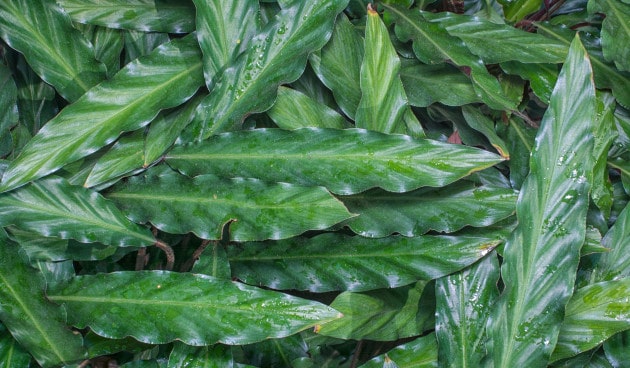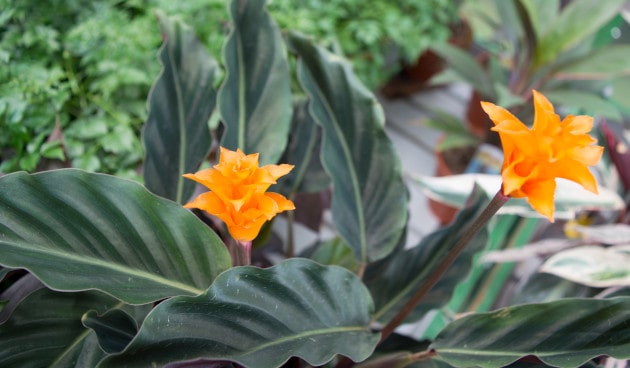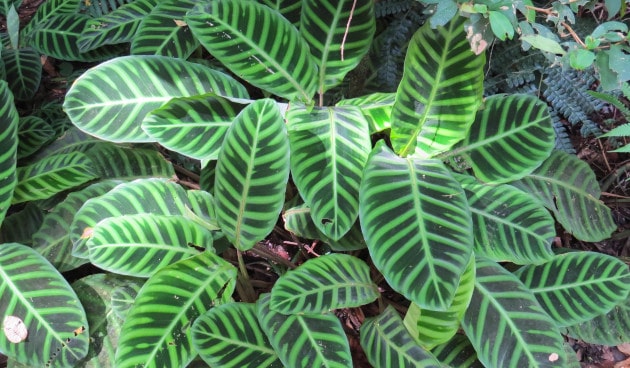Calathea Roseopicta is one of the brightest and most exotic indoor plants. It becomes an adornment of any collection, however, it is not easy to grow it. Let’s find out how to please and care for the Calathea Roseopicta variety.
Calathea Roseopicta, in our homes, is not just a decoration, but one of the most useful plants. It is able to absorb harmful substances from the air and neutralize them, convert carbon dioxide into oxygen, and contribute to an increase in air humidity.
Table of Contents
- 1 Calathea Roseopicta Identification
- 2 Calathea Roseopicta Sisters ( Other Calathea Varieties)
- 3 Calathea Roseopicta Home Care
- 4 Reproduction of Calathea Roseopicta at Home
- 5 Transplant Calathea Roseopicta at Home
- 6 Calathea Roseopicta Diseases
- 7 Calathea Roseopicta Pests
- 8 Your Questions About Calathea Roseopicta
Calathea Roseopicta Identification
Even in the wild forests of the tropics, Calathea Roseopicta stands out for its unusual leaves. They are smooth, shiny, and velvety, green, purple, and purple with white or pink stains, green, dark red, or purple underneath. Yes, the flowers are not always large and often inconspicuous, but the bizarre pattern on the leaves more than makes up for this shortcoming.

The Calathea Roseopicta plant can reach a height of 1 m, but most have a more compact crown – a height and diameter of about 50 cm. It develops quite quickly, I grow up to 5-6 new leaves during the growing season.
Calathea Roseopicta is often called a “prayer plant” because, depending on the time of day, its leaves are either unfolded, demonstrating external beauty, or folded vertically in the evening, like hands in prayer, and show the underside of the leaf.
Calathea Roseopicta is an evergreen perennial plant of the Marantaceae family. About 300 species of this genus are known.
Calathea Roseopicta Sisters ( Other Calathea Varieties)
The number of species and varieties of Calathea plants is growing every year. And if earlier flower growers were mainly interested in species plants, now more and more varieties appear on the market.
Calathea Lanceolate (lansifolia)
Calathea Lanceolate (Calathea lancifolia) is also known as wonderful Calathea – this is one of the most popular aids. It is characterized by rapid growth and the ability to grow on our windowsills without special conditions.

This type of Calathea grows up to 70 cm in height and is narrow (3 – 5 cm), Lanceolate leaves can be up to 25 cm long. Calathea blooms in room conditions extremely rarely, but this does not matter, because the flowers are small and inconspicuous. But the leaves are very decorative – the top is light green with a geometric regular pattern of dark green ovals, and the underside is maroon with purple reflections.
Calathea Orbifolia
Calathea orbifolia (Calathea orbifolia) has luxurious large round leaves, on high (up to 60) cm petioles. Thin sheet plates with spectacular beautiful light ornaments on a dark background have a light wavy edge.

In-room conditions, flowering is extremely rare, and small pale flowers with greenish bracts are lost against the backdrop of beautiful foliage.
Calathea red-bearded (rufibarba)
Calathea velvet or red-bearded (Calathea rufibarba) has a characteristic orange pubescence. Narrow leaves on long (up to 80 cm) petioles have an elongated shape, a sharp top, and a wavy edge. The upper side of the sheet is dense, saturated green, and the lower side is burgundy.
Small cream flowers in spike-shaped inflorescences appear only in natural conditions.

The market of ornamental plants offers 3 varieties of Calathea velvet:
- Tropistar (Tropistar) – the underside of the leaf is dark green with a bluish bloom;
- Bluegrass (Blue Grass) – the underside of the leaf is green;
- Wavestar (Wavestar) – the underside of the leaf is pinkish-purple.
Calathea Varshevich
Calathea warscewiczii (Calathea Warscewiczii) is perhaps the largest sissy of all species of this genus. It will grow normally only at high humidity levels (about 80 – 90%).

In comfortable conditions, it can bloom, but at the same time, curved shoots are formed that need support.
Calathea saffron (Crocata)
Calathea saffron (Calathea crocata) is able to bloom regularly at room conditions and its flowers are large, bright orange or yellow. They rise on tall peduncles.

Flowering occurs in January. And then the Calathea Crocata becomes especially spectacular, because the bright flowering emphasizes the bright green color of large leaves, shimmering with a metallic sheen. But this effect is achieved when the plant is kept in a greenhouse or florarium with high humidity.
Calathea Makoya
Calathea makoyana (Calathea makoyana), despite its popularity, not every grower manages to tame it. Nevertheless, it is very attractive – compact (up to 50 cm in height) with narrow long (up to 20 cm) leaves, painted with a beautiful pattern.

Calathea striped (Zebrina)
Calathea striped (Calathea zebrina) in favorable conditions can reach 80 cm in height, while its oval leaves can be up to 35 cm in length. The leaf plate is velvety, bright green with dark symmetrical stripes.

It blooms in natural conditions, greenhouses, and winter gardens with white or lilac small flowers on short pedicels.
Calathea decorated (Ornata)
Calathea decorated (Calathea ornata) is a child of the rainforests of Colombia. In-room conditions, it barely reaches a height of 50 cm. The leaves are large, elongated-oval with a glossy surface. The upper parts are rich green with a light central vein and thin white or light pink stripes.

Calathea sanderiana (Calathea sanderiana) is a Dutch variety of Ornata, which is very popular with flower growers. And not only because of the spectacular appearance but also the less whimsical nature and speed of growth of the bush.
Calathea Lietzei (Calathea lietzei)
Calathea lietzei is just beginning to conquer the indoor plant market, but today its Fusion White variety has become one of the most desirable plants for private homes. It is somewhat larger than the species Calathea, reaches a height of 60 cm, and narrow elliptical leaves (15×6 cm) have a smooth dark green surface with a metallic sheen and green and white marble pattern.
Calathea Roseopicta Home Care

Temperature
The temperature of the content is important – 22 – 24 ° С. Calathea Roseopicta does not have a dormant period, so she does not need a cold winter. Moreover, a decrease in temperature even to 18 ° C is already a concern – the plant can get cold and get sick. Therefore, when kept on the windowsill, they must protect the Calathea Roseopicta from cold glass and the windowsill.
Priming
After buying a plant in a store, the Calathea Roseopicta must be transplanted into suitable soil. It should be loose, fertile, and slightly acidic. You can purchase a special substrate for arrowroot in the store, or Saintpaulia soil by adding perlite to it. Or make your own.
The most successful composition is as follows: 2 parts of neutralized peat, 2 parts of leafy soil, 2 parts of sifted humus, and 1 part of coarse sand or vermiculite. For 1 liter of mixture add 40 g of crushed charcoal.
Lighting

Calathea Roseopicta plants in nature grow in diffused sunlight with long daylight hours. Direct sunlight causes leaf burns. Therefore, in summer, the Calathea Roseopicta plants are slightly shaded from the sun with a net, or they put east or west windows on the windowsill. But you should always remember that daylight hours for Calathea Roseopicta should last at least 12 hours, so additional lighting is required in winter.
Humidity
A high level of air humidity is the most important criterion for the successful cultivation of Calathea Roseopicta. In winter and summer heat, you can turn on a household air humidifier in a room near plants. Deep pallets with wet expanded clay are also used, and vessels with water are hung on radiators. Species and varieties with smooth leaves are recommended to be sprayed daily with water just above room temperature.

Watering the Calathea Roseopicta should be settled with soft warm water. Before watering, the earthen ball should dry out by about 1/3 of the volume. Water abundantly, water flowing into the pan should be drained after 10 – 15 minutes.
Fertilizers
For top dressing, Calathea Roseopicta uses special fertilizers for decorative and deciduous plants in liquid form.
Top Dressing

From spring to autumn, Calathea Roseopicta plants are fed with a solution of complex fertilizer every 3 weeks, but the dosage is reduced by 40 – 50%. In winter, 1 top dressing per month is enough.
To maintain an optimal level of acidity, it is recommended to add citric acid to the water for irrigation.
Pruning Calathea Roseopicta
Calathea Roseopicta pruning is done only when the leaves get sick or dry out. Initially, it is cut 5 – 6 cm above the soil level, but when the stem stump dries, it is completely removed.
Reproduction of Calathea Roseopicta at Home
It is possible to grow Calathea Roseopicta from seeds, but this is a complicated, long, and not always successful way.
The Division of the Bush

It is easier and more reliable to divide the Calathea Roseopicta bush during a spring transplant by cutting the plant with a sharp disinfected knife into pieces so that each has 2-3 leaves and roots. Sections must be treated with a fungicide, planted in pots with a substrate, and placed in a warm (24 – 25 ° C) bright place, preferably in an aquarium or a transparent vessel, where 90% humidity can be maintained.
Calathea Roseopicta Cuttings
A more difficult and long method of propagation is by cuttings. To do this, cut off the above-ground stalk, dust the cut with a root formation stimulant and plant a transparent pot with a wet substrate, covering it with a transparent cap. Spray and ventilate regularly, but completely remove the shelter only after the stalk gives roots.
Transplant Calathea Roseopicta at Home

Young Calathea Roseopicta plants in the first 3 years of life are transplanted annually in the spring. Adult specimens – 1 time in 3 – 4 years. The rule applies: each new pot should be 2 to 3 cm larger in diameter. Pots should be heavy enough not to tip over under the weight of the plant, wide, with large drainage holes.
Drainage is poured at the bottom of the pot, then a thin layer of crushed charcoal and a layer of substrate. The plant is transplanted by transshipment, removing damaged and diseased roots, as well as the top layer of soil. Next, the substrate is poured, squeezed, and watered.
After transplantation, plants with smooth leaves are sprayed 2 times a day with warm water, Calathea Roseopicta with velvety leaves is covered with plastic wrap for 2 to 3 days.
The first watering after transplantation is done after 10 days.
Calathea Roseopicta Diseases

With proper care, Calathea Roseopicta is extremely rarely affected by diseases. Mistakes in care cause primarily physiological diseases – dry spots or leaf tips as a result of sunburn or dry air.
Yellowing and drying of the leaves, and blackening of the stem – this is Fusarium wilt. It is impossible to cure this disease, the plant must be destroyed.
With excessive watering of Calathea Roseopicta, powdery mildew, and rhizoctoniosis may appear. The first disease manifests itself in the form of white spots on the leaves, and the second – rotting of the roots. First of all, the plants are placed in quarantine, the damaged areas are removed and sprayed 2 times an interval of 10-14 days with a biofungicide.
Calathea Roseopicta Pests

In a dry atmosphere at home, spider mites, scale insects, and thrips can attack Calathea Roseopicta. It is necessary to inspect the plants regularly, especially if there are signs of yellowing of the foliage, sticky coating, or cobwebs.
First of all, the plants are thoroughly washed with soapy water. Then, twice with an interval of 10-14 days, they are sprayed with pest control spray. It is more difficult to deal with spider mites, but if you increase the humidity to 90%, the problem can be solved even without powerful insecticides. To do this, you can place the plant in a terrarium or aquarium for several days.
Your Questions About Calathea Roseopicta
Q1: Why does Calathea Roseopicta dry?
Dry leaf tips indicate dry air in the apartment. The way out is to moisten the plant more often and put the pot in a large tray with wet expanded clay or pebbles. Individual dry spots on the leaves are most likely the result of the sun hitting wet leaves. The reason for the drying of the leaves may be thrips or a cold window sill.

Q2: Why do Calathea Roseopicta leaves turn yellow?
The yellowing of the lower leaves is a natural process, this is how the death of old leaves begins. But the leaves can turn yellow for other reasons: excess fertilizer or moisture. Therefore, it is better to reduce the dose of fertilizers when feeding, and water strictly as needed, be sure to drain the water from the pallets. Yellowing of the leaves in winter can also be caused by too low temperatures.


